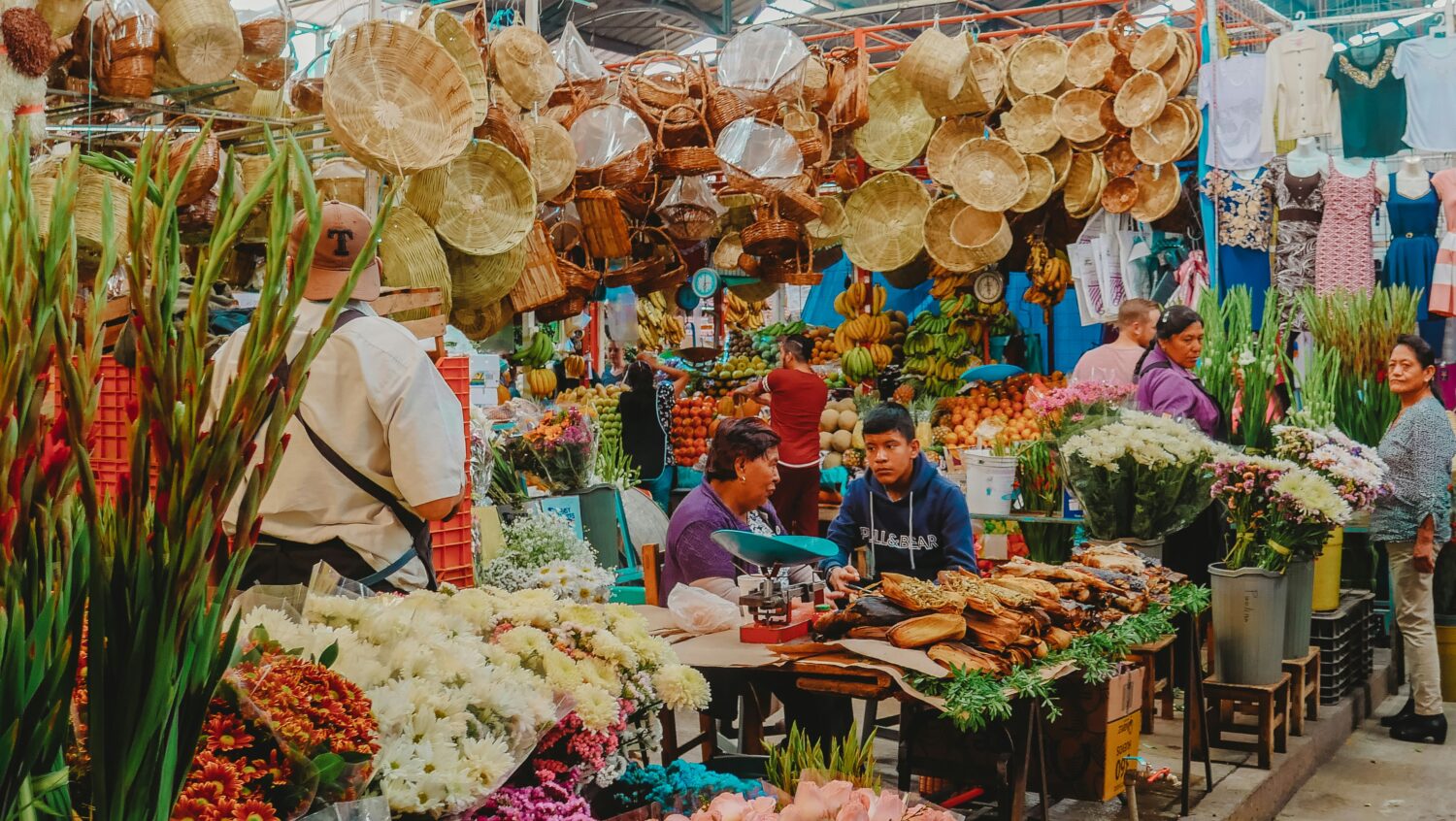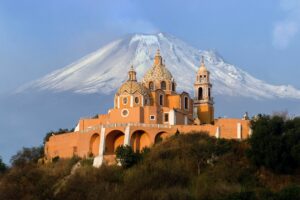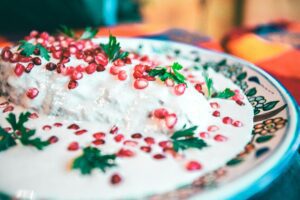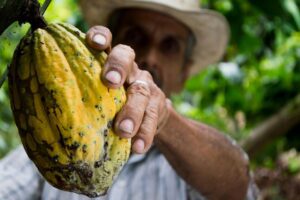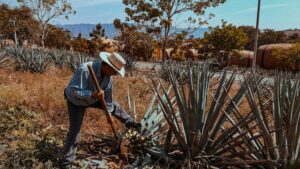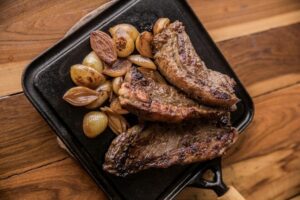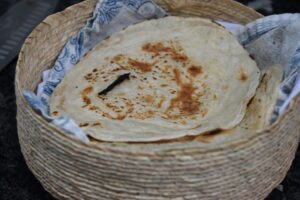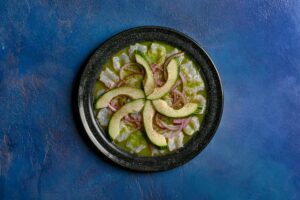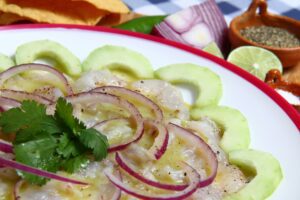A Culinary Journey Through Gastronomic Diversity.
WARNING!
The following content describes a variety of savory dishes that can cause uncontrollable mouthwatering cravings. We are not responsible for what this post may cause to readers.
Mexico is a country where food is more than just a necessity, it’s an art.
From the warm beaches of the coast to the high mountains, each region offers a unique blend of ingredients, techniques, and culinary traditions that proudly reflect the history and diversity of its people.
There’s nothing in the world like starting the day with a good cup of Mexican coffee from Veracruz or Chiapas, accompanied by a delicious Pan Dulce, with a healthy plate of seasonal fruits like pitahaya or mango. Mexicans take dinner time seriously, and while we could eat tacos all day every day, we also enjoy the wide variety of traditional dishes that represent each of the country’s 32 states.
Join us on a sensory journey where we’ll discover how each dish tells a story, how each ingredient is inspired by cultural significance, and how each recipe reflects the fusion of Mexican Indigenous, European, and African influences that have shaped Mexican cuisine as we know it today.
32 are a bunch so I’ll start what might become an epic series with five of the top culinary states of our vast territory:
PUEBLA
Photo by Pedro Lastra
Puebla is a culinary destination about two hours outside of Mexico City, where each bite takes you back in time with ancestral flavors mixed with Spanish, French, and Arab influences.
Puebla’s culinary richness dates back to when native Mexican cooking ladies worked at catholic convents during the Spanish Colonial times. These catholic temples were not only places of prayer but also true gastronomic laboratories where cooks from the area and Spanish nuns created unique fusions between native ingredients and more exotic ones brought from the old continent.
Culinary expert women mixed corn, chiles, beans, and tomatoes with olive oil, wheat, and onion, using traditional utensils such as clay pots and metates. Their culinary skills transcended the walls of the convents, founding the gastronomic traditions that endure to this day.
There are a few sacred ingredients essential in the core of Puebla cuisine: corn, beans, chiles, some fruits like bananas or pomegranates, veggies like tomatoes or tomatillos, and pumpkin and sesame seeds. Birthplace of the Chile Poblano. Most of the emblematic dishes include even more ingredients, such as Mole Poblano with Poblano, Mulato, Ancho chiles, star anis, and peanuts. Another exquisite dish is the Chiles en Nogada, which represents in its flavors and colors the freedom of our country, and the comforting Mole de Caderas with the characteristic flavor of goat bones.
Photo by Javon Swaby
Puebla is also famous for its irresistible antojitos such as Cemitas, a wheat bun sandwich filled with beans, cactus, or meat with chipotle, cheese, and pápalo leaves, or Chalupas, small corn tortillas fried in pork lard or oil, covered in a generous spoonful of green or red sauce and a portion of shredded pork or chicken and finely chopped raw onion on top.
OAXACA
Photo by Pixabay
The true magic of Oaxacan cuisine lies in its diversity and the unique fusion of indigenous, Spanish, and African cultures. The South Pacific Ocean waters in Oaxaca and the countryside, together with the efforts of its farmers, ranchers, and fishermen, have shown why the gastronomy of this state is an authentic culinary gem.
The soul of Oaxacan emblematic dishes relies on the multiple native varieties of corn, chiles, vegetables, and cacao. Among the favorites, we have the emblematic Mole Oaxaqueño, with its perfect mix of chilies, spices, and chocolate, the Tlayudas, a kind of giant crunchy tortilla, covered with black beans, spiced dried meat, grasshoppers and/or escamoles (ant larvae), chorizo, quesillo and avocado, the all-time favorite Tamales, wrapped in banana leaves and the exquisite Tasajo, a type of roast meat marinated in achiote.
Photo by Walter Alejandro
To perfectly pair the Oaxacan cuisine, enjoy a sip of the famous Mezcal, a smokey hand-crafted agave distillate, local pride, and cousin of Tequila.
YUCATÁN
Photo by Mario La Pergola
Rooted in a rich history and a unique blend of cultural influences, Yucatecan food is a celebration of the diversity of local ingredients and artisanal skills passed down from generation to generation.
The unique fusion of Yucatecan flavors is characterized by the use of aromatic herbs such as cilantro, avocado leaf, and epazote, as well as spices such as allspice and achiote, known as the “red gold” of Yucatan. Achiote adds vibrant color and earthy flavor to the emblematic Cochinita Pibil, prepared with pork marinated in a mixture of achiote, sour orange juice, and more spices, wrapped in banana leaves and slowly cooked in holes in the ground used as ovens. Another favorite dish of both locals and tourists is Recado Negro, a festive dish that consists of turkey or chicken meat cooked in a dark and spicy sauce made with dried chiles and spices.
The delicious fusion of citrus and chiles is the main flavor of ceviches and aguachiles prepared with fresh local seafood, as well as smoked fish with Xcatic chile and the favorite and refreshing lime soup, prepared with a chicken broth flavored with lime, shredded chicken, crispy tortilla and a touch of chile habanero.
Corn, as the most sacred food for Mayans has occupied a central place in the diet and culture of Yucatán, in addition to being used to make tortillas, tamales, salbutes and panuchos, corn is also transformed into drinks such as atole and pozol, which are prized for their comforting flavor and nutritional value.
SONORA
Photo by Junior REIS
Sonora’s Cuisine is a tasty fusion of the flavors and traditions from the northern Mexican desert and the coasts of the Sea of Cortez.
Carne Asada is a local emblem, back in the day, not being able to keep the meat in refrigerators, the tradition was to dry the meat to preserve it, known as “Carne Seca” or dried meat, very similar to beef jerky.
Sonora’s meat is world famous thanks to its quality standard and the exclusive local breeding of its cows, many European breeds have adapted to the heat, therefore, around 90% of Sonora’s cattle come from a mixture of European breeds such as Angus. Due to the Sonora drought, the grass with which calves and cows feed is dry, which generates greater fat coverage and fewer muscle fibers.
“Carne Asada” is the most common type of taco you’ll find in Sonora, regularly seasoned with a little bit of sea salt and sometimes a blend of spices, cooked over hot coals, the result is a tender, juicy, and full-of-flavor beef served with warm fresh made wheat tortillas, refried beans, guacamole, salsa, and a big group of family and friends to share it with.
Photo by Sergio Contreras
In Sonora, you will hardly find any corn tortillas. Back in colonial times, with the introduction of Catholicism, wheat became necessary for making hosts and celebrating the Eucharist. Because of its weather, the northern part of Mexico’s territory was more apt for the cultivation of wheat, making it more accessible than corn so in time wheat tortillas became way more popular in the northern states.
The traditions of Sonora go far beyond Carne Asada, fresh seafood is a key part of the coastal diet, with dishes like ceviche, garlic-mojo shrimp, and fish tacos, capturing the freshness and richness of the Sea of Cortez.
SINALOA
Photo by Low and Slow life
The warm Pacific sun and the coast of Sinaloa are part of the perfect marriage of the tempting aromas and flavors of fresh seafood, grilled meats, vegetables, and local chiles that make Sinaloa cuisine a unique experience of flavors.
Being the state with the biggest production of Shrimp in the country, various dishes are prepared with them, like ceviches, spicy “aguachiles“, shrimp cocktails, and the very famous shrimp tacos: “Taco Gobernador” (Governor Taco), sautéed with bell pepper and cheese. Likewise, fish is a key ingredient prepared in infinite ways such as fried, grilled, or in traditional dishes such as spicy smoked fish.
Sinaloa is also Mexico’s biggest cucumber producer, so they naturally use it in many of their recipes.
Photo by Carlos Davila Cepeda
Beef and pork are also a big part of Sinaloa cuisine, whether in the Chilorio, cooked with soft and juicy pork marinated in a spicy sauce, traditionally prepared in tacos or quesadillas. Chilorio was traditionally invented as a way to preserve the meat since the spices help conserve it for longer periods.
Photo by RDNE Stock project
It’s a real treat to live in beautiful Mexico and to be able to enjoy these dishes every day, something you, dear foodies, could also experience on your next visit to the Riviera Maya. At Eating With Carmen Food Tours, our main mission is for you to taste the majority of these traditional dishes. Choose from 4 different types of food tours located in the main cities of the Riviera Maya, such as Playa del Carmen, Cancun, Puerto Morelos, Tulum, and our neighbor Merida. A local foodie guide will welcome you with a delicious flavored Agua Fresca, you’ll tour the town tasting local dishes from various states, prepared by authentic Mexican hands, learn a bit of history, and finish the tour with a delicious dessert and, satisfied belly and a happy heart.
See you around town!
-Abbey.

